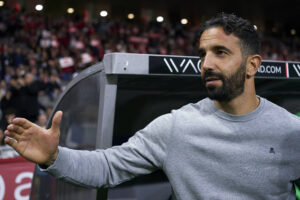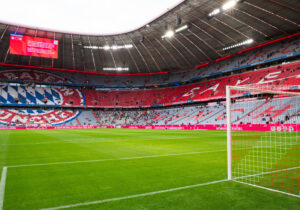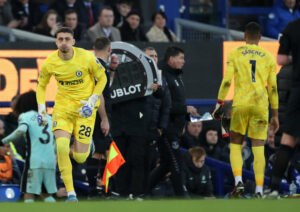Perennial under-performance gave way to complicated financial issues and, this summer, Marseille found themselves at a significant crossroad. Squad reinvention, changes to recruiting and a reassessment of revenue expectations were reason enough to believe that the storied French side was preparing for a period of transition. When the club decided to hire Andre Villas-Boas to see them through this integral moment in their modern history, it came as a shock. However, early in the season, Villas-Boas and Marseille are thriving.
Andre Villas-Boas and Marseille a Perfect Fit
A Season of Transition
2018/19 was a lamentable season for Marseille, with the club finishing fourth in Ligue 1 and outside the European places. The disappointment was compounded by an embarrassing showing in the Europa League, which saw Marseille finish at the bottom of their group – only able to accrue one-point and a minus ten goal difference.
It was clear the club was going to have to make significant changes both on and off the field. Marseille’s recruitment over the past several years has been regrettable; the club opting to shell-out large sums on ageing players without any discernable long-term strategy. The result has been transfer deficits, coupled with poor league showings. The result of which has meant posting year-over-year profit losses – something France’s football governing body, the Ligue de Football Professionnel (LFP), simply does not tolerate.
As a consequence, Marseille were not able to splash the cash in the transfer market this summer and were limited to spending what they could take in through player sales. Unfortunately, the squad was replete with many older players on high wages and it became apparent that the club was not going to be able to turn the roster over in one season.
What is more, the club parted ways with its manager Rudi Garcia after three seasons at the helm. Garcia’s departure meant the club not only needed to find a manager willing to take on such a challenging project, but also one that could bring some stability to the touchline.
Motivating the Veterans
After two years out of the game, it was curious to see Villas-Boas return to a project as confounding as Marseille. To further complicate matters for the Portuguese, OM’s most important attacking talent, Florian Thauvin, suffered a significant ankle injury in July and is not expected to re-join the team until the New Year. Whatsmore, Villas-Boas took on a side devoid of talent at centre forward, after the club could not meet Mario Balotelli’s high wage demands.
As the summer progressed it seemed clear that Marseille were not going to be able to clear out any of their high-priced, ageing talents and therefore would only be able to make minor changes to the roster.
The club did see their way to selling Lucas Ocampos, Clinton N’Jie and Luis Gustavo, and with the added funds Villas-Boas brought in 24-year-old FC Nantes midfielder Valentin Rongier and 29-year-old Argentine striker Dario Benedetto from Boca Juniors. Up and to that point, Benedetto had only ever plied his trade in Mexico and South America and there were serious doubts about both his age and ability to translate to the European game.
The limited transfer budget and immoveable contracts meant that Villas-Boas would have to put his faith in a group of veterans who, in recent years, had proven difficult to motivate.
However, that’s just what he’s done. At present, Jordan Amavi, Steve Mandanda, Kevin Strootman, Morgon Sanson, Valerie Germain and Dimitri Payet are all in the squad’s top-11 in terms of minutes played. This is rendered all the more impressive by the fact that the average age among this group of players is 29-years-old.
Adjustment in Style
Villas-Boas has quickly accepted that he does not have the most technically gifted side in the league and that Marseille will have to make up for their shortcomings by being more rigid defensively and more alert tactically. The first change the 41-year-old manager made was shifting to a 4-3-3 formation in attack, as opposed to the 4-2-3-1 formation preferred by Garcia. Villas-Boas has also chosen to drop back into a solid 4-4-2 defensive shape, while instituting a much more aggressive forward press.
The tweaks have paid dividends so far this season, as Marseille sit second in the league in PPDA (passes allowed per defensive action) and are in the top ten in non-penalty expected goal-differential (NPxGD). The first match of the season and a wild derby against Monaco aside, Marseille have not allowed more than one goal in any other match this campaign.
Going forward, Marseille do not create as many goal-scoring opportunities as supporters might be used to, but they have been clinical in taking their chances. After a slow start to the season, Benedetto has begun to hit his stride and now leads the club with four goals. Similarly, Villas-Boas has been able to get a tune out of Payet, who has shown a willingness to chip in defensively, while remaining a potent creator in the attacking third – averaging over three key passes per-90.
Expediting the Rebuild
Marseille’s early-season success needs to be taken with a grain of salt; the club still sit five points behind rivals Paris Saint-Germain for top spot in the table and, long-term, the organization as a whole, still needs to address its bloated roster and a somewhat lethargic youth development system.
Nonetheless, the manner in which Villas-Boas has been able to get a group of veterans to buy in to new principles and ideas with such efficacy should excite the majority of local supporters. This was supposed to be a transition year for Marseille with the expectation being that it would take some time for the club to curtail certain contracts, while Villas-Boas properly bedded in.
The fact that the Portuguese manager has the club playing, albeit not necessarily attractive, but more complete football, only eight matches into his tenure is reassuring. The marriage between Villas-Boas and Marseille may have seemed curious when it was announced, but as the Ligue 1 season shifts into October it is looking more-and-more symbiotic and the future ever brighter.
Main Photo






